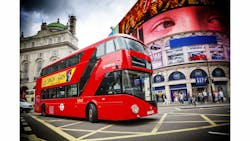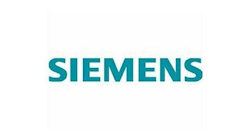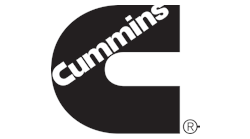About one hour north of Belfast in the heart of Northern Ireland, the people of Galgorm, Ballymena are making big impacts in transportation across the globe.
The town of about 50,000 people is typical of most areas in Northern Ireland. Green fields welcome you into the town where brick homes dotted with flags of the Orange Order still fly outside and a heavily fortified police station stands next to the road harkening back to the days of “The Troubles,” that plagued the region for decades.
Some residents of the town go to their jobs at the are Michelen plant while others go to the JTI tobacco plant, which fills the air with the sweet scent of cherrywood tobacco. And throughout the day, buses destined for transport agencies across the U.K. rumble through town as it’s third major employer — Wrightbus — tests them before final delivery.
“It’s quite a different environment here compared to many of our competitors,” Product Director David Barnett says. “It’s due to the family influence.”
Founded in 1946 by Robert Wright, the company evolved over the years from different types of vehicle manufacturing until the 1970s when it began to really focus on buses and coaches. Wright’s son William, 87, still comes to work every day and even still drives his Nissan Leaf there. And when he’s there, company executives say he’s still keeping on top of them and letting them know what they’re doing wrong.
We don’t tell him this, but he’s most often right,” Barnett said.
In the past 15 years, the company has seen itself grow extensively and build a strong relationship with Transport for London, the largest public transport provider in the United Kingdom. The relationship blossomed further as Wright was picked to build the new Routemaster double decker bus, which was designed by Thomas Heatherwick, designer of the 2012 Olympic cauldron in London, and equipped with hybrid drive units from Siemens coupled with Cummins 4.5 liter engines. It’s the largest hybrid bus order ever placed with 600 being delivered and up to 1,000 potentially made by Wright under the contract.
Since the contract was signed, Wright has expended into Hong Kong and Singapore and now is building facilities in India.
Wright also build the bus rapid transit units in service for the Regional Transportation Commission of Southern Nevada in Las Vegas. The company had a partnership with Optima to deliver more buses in North America, however, the global economic collapse of 2008 put a halt on those plans.
The company is still looking to expand further into the U.S. market and bring the strong family values it has to North America.
“Being a family firm, Jeff Wright, shareholder of the firm has a very Christian outlook,” Barnett said. “That building out front is a church that Jeff runs. He has a real passion for making a difference in people’s lives. That comes through the church, but it also comes through here within the company. He really wants to see the Wrightbus Group make a difference in people’s lives.”
A push for savings
Unlike most bus manufacturers, Wright uses aluminum for its buses in order to drastically reduce the weight of the unit and add to potential fuel cost savings. Barnett said Wright’s 11.5 meter bus can now compete capacity wise with an 12 meter bus while weighing 3-4 tons less.
The loss of weight allows for the bus to get upwards of 11 miles per gallon compared to 6-7 mpg for a steel build bus.
“We aim for a much more intelligent use of parasitic loads…and because we’re independent, we go out and look at a vast range of engine technology and accessory technologies and put together a system that makes sense for that application,” Barnett said.
The use of aluminum also allows for more flexibility in building the buses as well. Roofs are strung with wiring on their sides to avoid workers having to reach overhead all day and the sides are assembled with brackets instead of welded. Barnett said bolting portions of the body together instead of welding one big unit also allows for easier collision repair as body shops can just bolt in new panels.
Composites are also in use on some Wright products, but Barnett said they’re not going to abandon aluminum. Composite pieces can be much more expensive, so they’re used strategically when they make sense, such as in the Routemaster, where it’s all aluminum with the exception of the last 1.5 meters, which is a composite.
Growth abounds
Wright has seen its market change drastically this century with demands for new technologies and needs for agencies worldwide. Hybrid technology has also boomed and Barnett said the company has gone from producing just a handful of hybrids per annum to roughly half.
Double deck buses have been popular for some time in the U.K., but now they’re becoming popular in Hong Kong, where they can carry upwards of 150 people.
After the Routemaster was built, Wright sent three of them on a worldwide tour, with ones running through the streets of New York — which Barnett said caused issues because that city isn’t designed for double deck buses — and another rolling across Columbia. Even when civil unrest in part of that country threatened the derail the tour, the Wright crew was able to get it through safely and without issue and without running out of fuel.
Wright builds bus components and sends them overseas for assembly at a partner facility. A company engineer goes to the plant as well to supervise the build. There’s little concerns about intellectual theft by the partner companies, Barnett said because even if they’re able to figure out why certain designs are put in, Wright offers a 20 year warranty on its body, so there’s no incentive to copy or compete.
“One of the big factors that keeps people from following our stuff is because it’s built from aluminum and there’s a perception, a wrongly held perception from the bus builders that it’s a much more expensive,” said Steve Harper, business development director for Wright International.
The RTC project didn’t need to meet Buy America standards due to the funding plan, but Barnett said they use a lot of American suppliers for deliveries here. When the RTC buses were completed, he said they were 65-70 percent by value produced in the U.S. However, new stipulations on assembly in Buy America make entrance into the U.S. market a little trickier.
“Now we’re in a little of a chicken-egg situation in terms of North America,” Barnett said. “Do we build something over there and generate the market or generate the market, then build something over there.”

Joe Petrie | Associate Editor
I came to Mass Transit in 2013 after spending seven years on the daily newsbeat in southeastern Wisconsin.
Based in Milwaukee, I worked as a daily newspaper reporter with the Waukesha Freeman from 2006-2011, where I covered education, county and state government. I went on to cover courts for Patch.com, where I was the main courts reporter in the Metro Milwaukee cluster of websites.
I’ve won multiple awards during the course of my career and have covered some of the biggest political events in the past decade and have appeared on national programs.
Having covered local government and social issues, I discovered the importance of transit and the impact it can have on communities when implemented, supported and funded.





